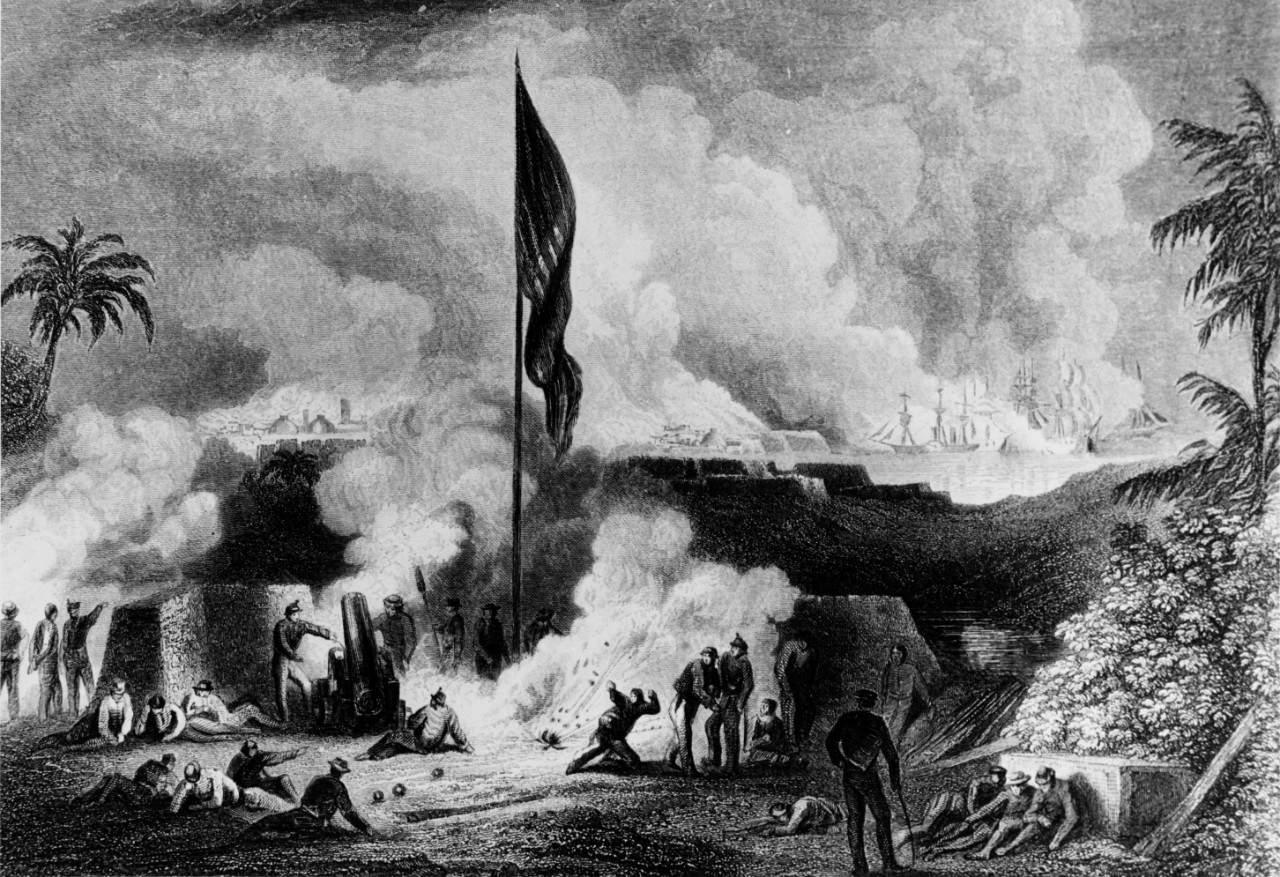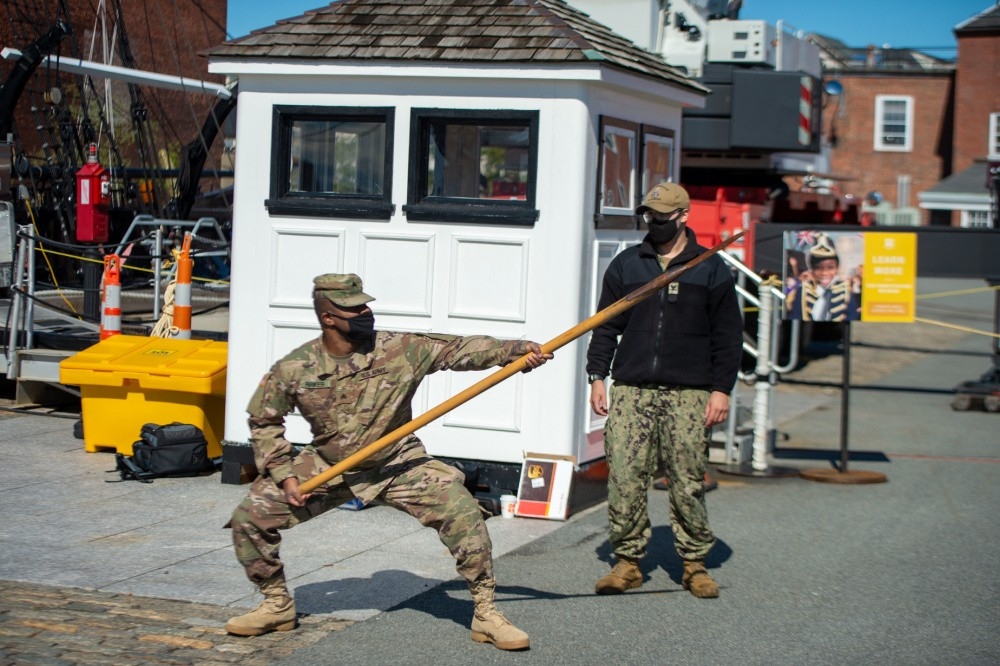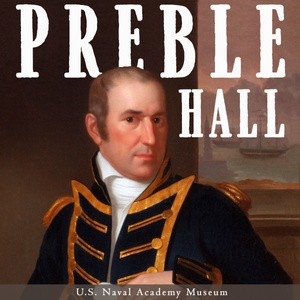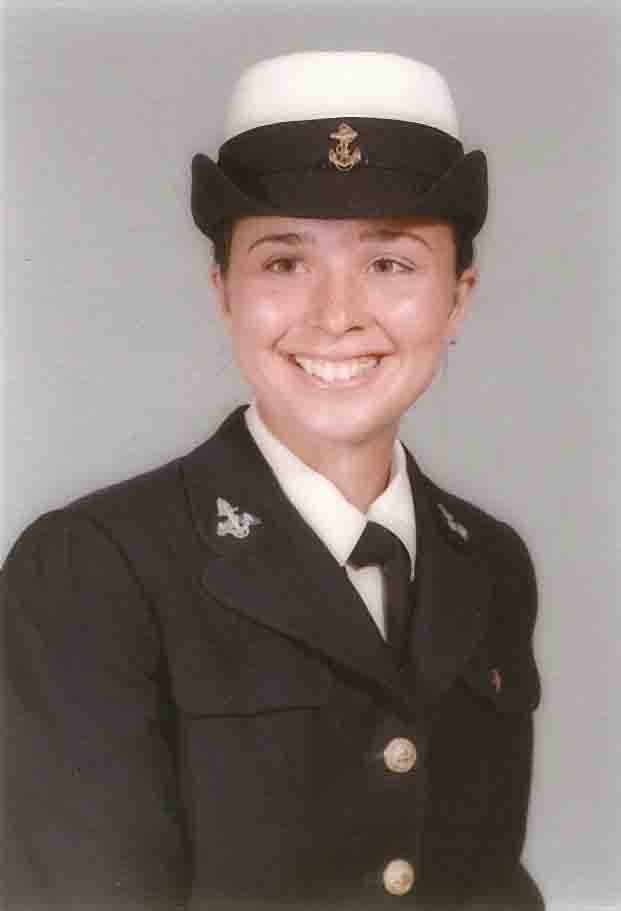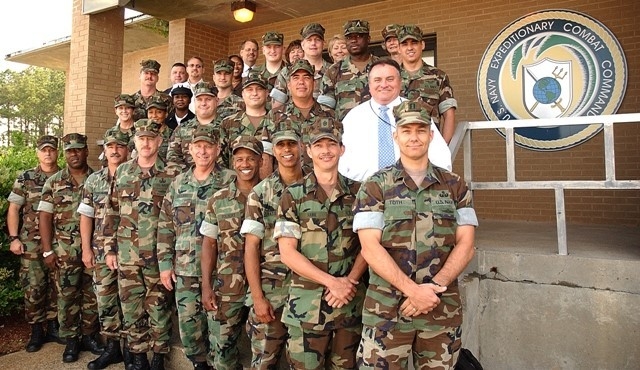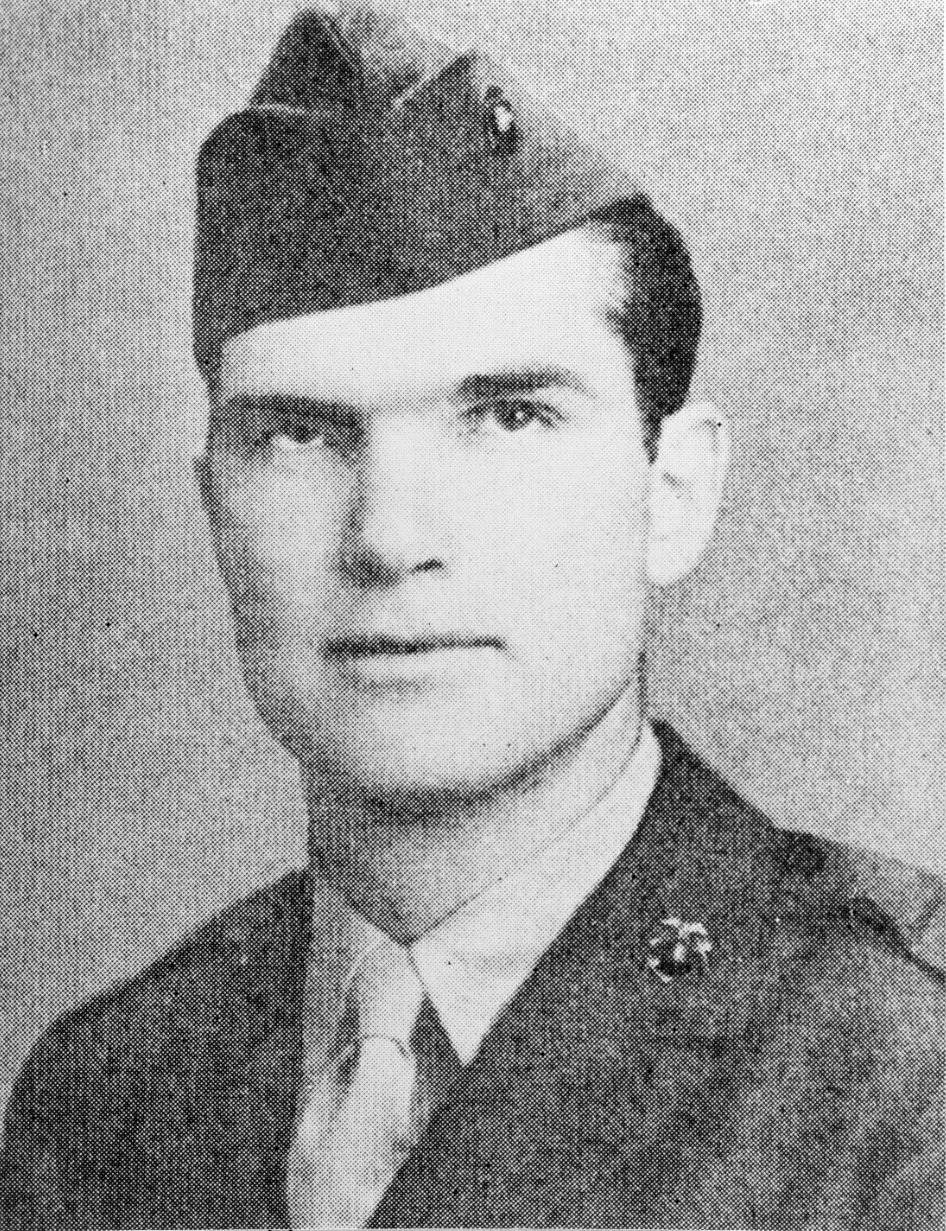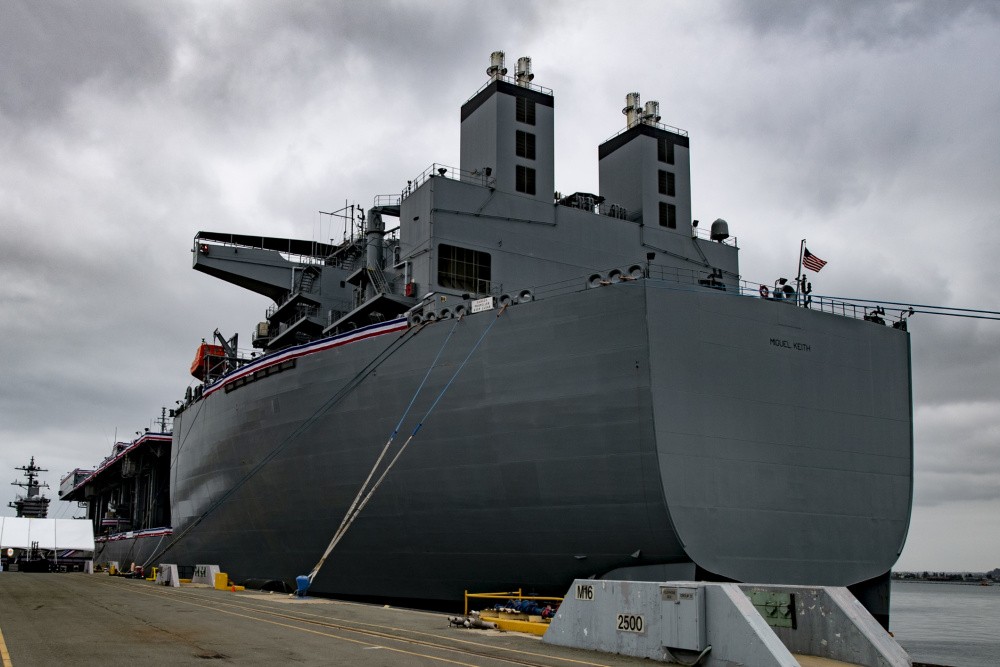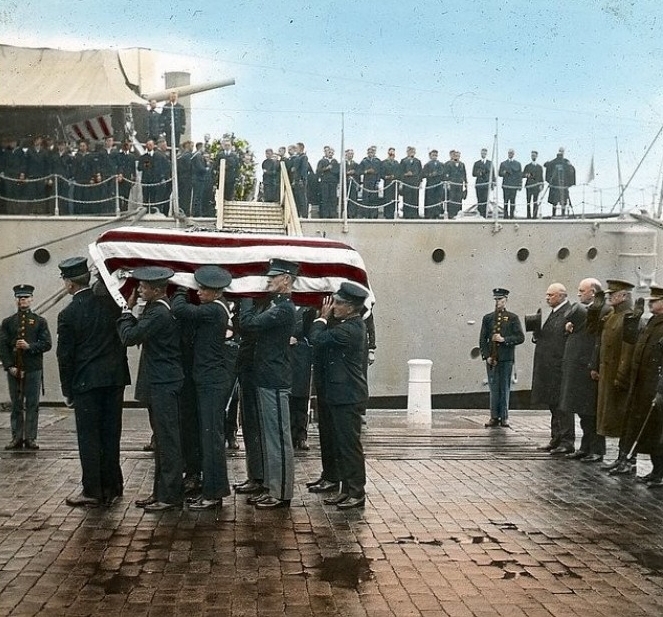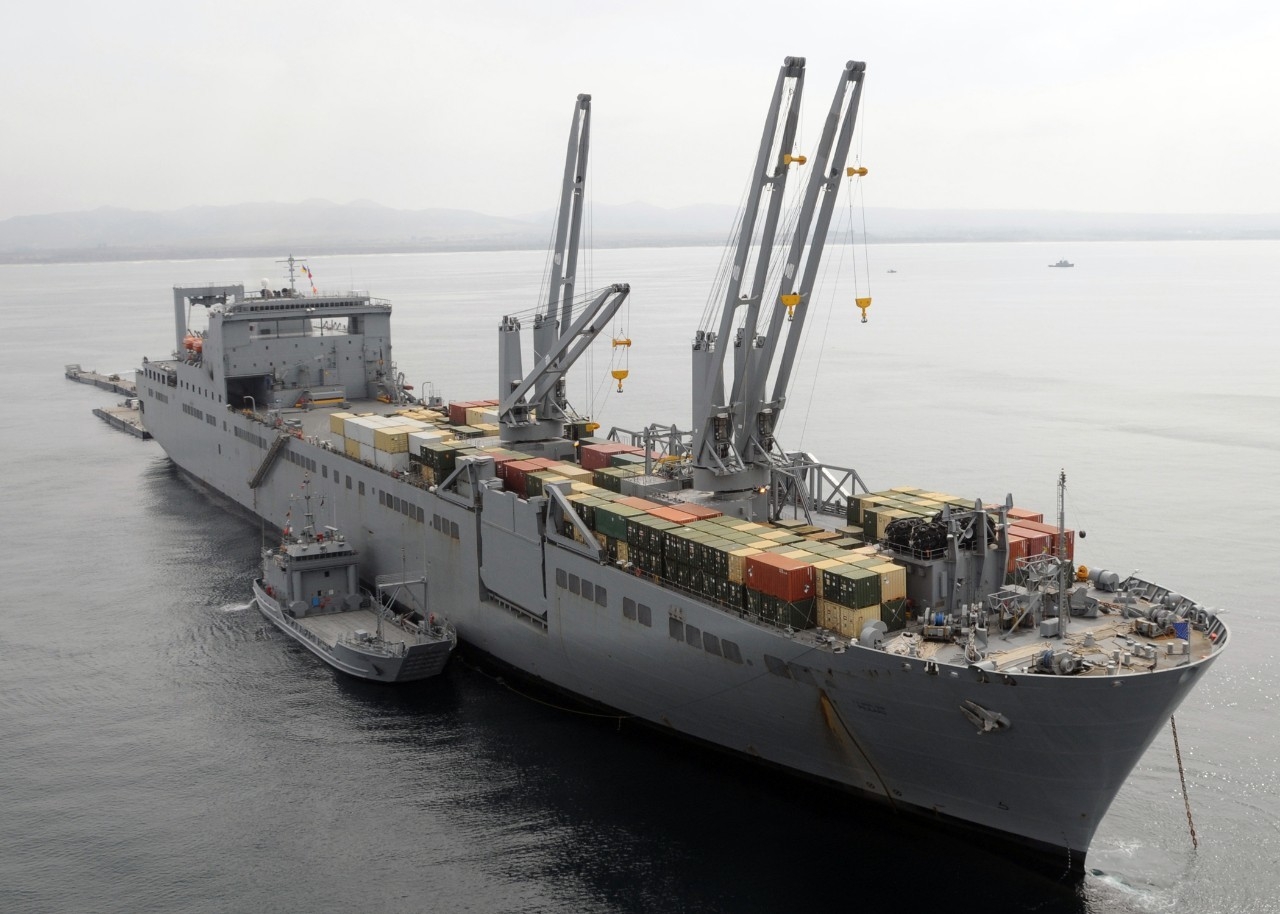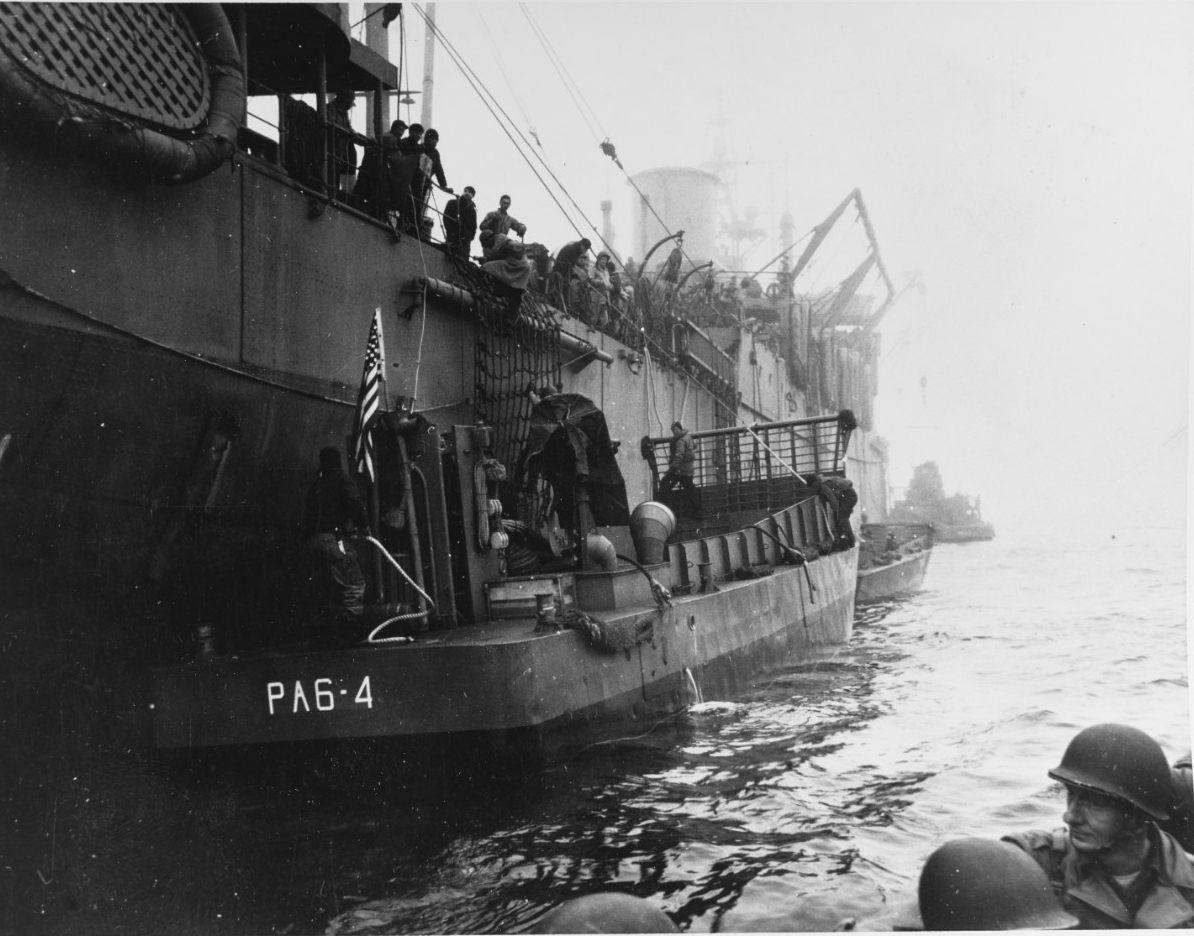Compiled by Brent Hunt, Naval History and Heritage Command’s Communication and Outreach Division
Mexican-American War Began—175 Years Ago
On May 13, 1846, Congress approved President James K. Polk’s declaration of war against Mexico. The catalyst for the Mexican-American War was the U.S. annexation of Texas on Dec. 29, 1845. Navy involvement in the war included blockades and operations on the Pacific coast and in the Gulf of Mexico. The Pacific Squadron, under the command of Commodore John Stoat and Commodore Robert Stockton, ensured success in the California campaign, and the Navy claimed Monterey, San Francisco, and San Diego for the United States. From the Gulf of Mexico, Commodore Matthew Perry traversed through the small rivers and waterways of Mexico to capture enemy strongholds and block supply routes. With Commodore David Conner, Perry also coordinated U.S. land and naval forces with Army Gen. Winfield Scott to land more than 22,000 American troops on Vera Cruz in March 1847. The landings would be the largest amphibious operation until the Anglo-French Gallipoli campaign in World War I. Due to the involvement of the Navy and coordination with Scott, U.S. troops took Mexico City within a few months of the Vera Cruz landings. The war ended on Feb. 2, 1848, with the Treaty of Guadalupe Hidalgo, in which Mexico agreed to extend the southern border of Texas to the Rio Grande River, and ceded present-day California, New Mexico, Utah, and Nevada, as well as parts of Oklahoma, Kansas, and Wyoming, to the United States.
Constitution Hosted Intelligence Battalion for 1812 Naval Heritage Training
The crew of the frigate Constitution recently hosted the Army’s 826th Military Intelligence Battalion for a day of 1812-era naval heritage training. Soldiers teamed up with Constitution Sailors to learn the history of America’s Ship of State, the process of firing a long gun, and the use of pikes in formation. “The reason why we came was for our Soldiers to learn military history,” said Sgt. 1st Class Axel Arroyo. “It helps get them in the mindset of being deployed. Today, we do not think like they did in 1812. It puts us in the mindset of going forward and not forgetting our past.” Constitution is the world’s oldest commissioned warship afloat. She was one of six frigates authorized by Congress with passage of the Naval Act of 1794. The ship played a crucial role in the Barbary Wars and the War of 1812, actively defending sea lanes from 1797–1855. Constitution earned the nickname “Old Ironsides” during the War of 1812 when British cannonballs were seen bouncing off the ship’s wooden hull. Today, Constitution is crewed by a select group of active-duty U.S. Navy Sailors who share her story with visitors from around the world and continue the U.S. Navy’s tradition of service through community outreach. For more, read the article.
Preble Hall Podcast
In a recent naval history podcast from Preble Hall, retired Navy Capt. Tom Bortmes discussed his tenure as the commander of the Office of Naval Intelligence during the Sept. 11, 2001, terrorist attacks. The Preble Hall podcast, conducted by personnel at the U.S. Naval Academy Museum in Annapolis, MD, interviews historians, practitioners, military personnel, and other experts on a variety of naval history topics from ancient history to more current events.
Owens V. Brown—Women Can Now Serve At Sea
On Nov. 10, 1976, Petty Officer Yona Owens and six other women sued the Navy in an effort to overturn a 30-year-old federal statute that limited Navy women to shore-duty billets, although they were trained to work aboard ships. Judge John J. Sirica presided over the case, and on July 27, 1978, he ruled that women should be allowed to serve at sea. Owens, who pushed for the change, was born into a Navy family. Her grandfather served in the Navy during the Spanish-American War and World War I, and her father served in the Navy during World War II. Owens, who said she was raised to solve problems, believed that it was unconstitutional, not to mention a waste of taxpayer money, to limit the service of shipboard-trained female Navy Sailors to shore-duty billets. In 1978, more than 25,000 women were serving in the Navy. Shortly after Sirica’s ruling, the Navy began assigning women to ships that were not expected to serve in combat. Subsequently, the Navy updated its policies in the 1990s to permit women to serve on combat ships. For more, read the blog by NHHC’s Denise Krepp in The Sextant. For more on women in the Navy, go to NHHC’s website.
The Establishment of NECC
On Jan. 13, 2006, 15 years ago, Navy Expeditionary Combat Command (NECC) formally stood up as the Navy’s Type Commander (TYCOM) for expeditionary forces. The establishment of the organization marked the end of a three-month sprint that began the previous fall. Working in borrowed spaces of Navy Supply System Command’s Fleet Logistics Support Center Norfolk, VA, the nucleus of what would become the headquarters element of NECC organized itself to take on missions of increased significance and visibility. In October 2005, Chief of Naval Operations Adm. Mike Mullen directed a type commander be established to man, train, and equip the Navy’s myriad of expeditionary forces. Rear Adm. Donald Bullard was tapped to form the staff. The largest of the forces comprising NECC at the onset were the 1st Naval Construction Division (Seabees), Maritime Force Protection Command, the Naval Expeditionary Logistics Support Force, Navy Coastal Warfare, and Explosive Ordnance Disposal. For more on the establishment of the NECC, read the blog by Capt. Angus Anderson in The Sextant.
William D. Halyburton
On May 10, 1945, during the Battle of Okinawa, Pharmacist’s Mate Second Class William D. Halyburton heroically sacrificed himself while serving with the 2nd Battalion, 5th Marines. On that day, heavy Japanese mortar, machine-gun, and sniper fire swept the Marines as they advanced to a strategically important area, pinning down the leading squad. As the squad continued to fight, Halyburton moved through enemy fire and reached a wounded Marine. As he administered first aid, a Japanese bullet struck his patient. With complete disregard for himself, Halyburton shielded the Marine with his own body while he continued to treat the patient. While administering aid, Halyburton was hit by Japanese fire that would take his life. For his extraordinary heroism, Halyburton was posthumously awarded the Medal of Honor. USS Halyburton honors this World War II hero. For more, read the blog.
Miguel Keith Commissions
On May 8, the Navy commissioned its newest Expeditionary Sea Base (ESB) ship during a ceremony at Naval Air Station North Island Coronado, CA. USS Miguel Keith is the third ESB variant of the Expeditionary Transfer Dock platform. The Lewis B. Puller–class ship is named to honor Marine Corps Medal of Honor recipient Lance Cpl. Miguel Keith, who made the ultimate sacrifice during the Vietnam War exactly 51 years to the day his namesake ship joined the fleet. For more, read the article.
The Ship that Saved the Unknown Soldier from Disaster
In the fall of 1921, the cruiser Olympia was halfway across the stormy Atlantic bound for the Washington Navy Yard from France. On the ship was the casket of the Unknown Soldier, tied down with rope and covered with canvas. Waves as big as 20 feet crashed against the ship during the tumultuous journey. A Marine who was guarding the Unknown, was hit at one point by a wave so large that it nearly tore his hip boots off. As the United States is set to celebrate the 100th anniversary of the Tomb of the Unknown Soldier at Arlington National Cemetery later this year, a museum plans to tell the story of how the ship and its sacred cargo were nearly lost at sea. The Independence Seaport Museum, adjacent to where the 129-year-old Olympia is docked in Philadelphia on the Delaware River, plans to open an exhibit titled “Difficult Journey Home” on May 28. It will recount how the ship battled alone through mountainous seas and the remnants of two hurricanes to save itself and the Unknown Soldier, and avoid a national catastrophe. For more on the exhibit, read the article.
Webpage of the Week
In celebration of Asian American Pacific Islander Heritage Month, this week’s Webpage of the Week is the Pfc. Herbert K. Pililaau page in NHHC’s namesakes. Cargo transport USNS Pililaau proudly bears the name of the U.S. Army private, who was posthumously awarded the Medal of Honor for his actions in 1951 during the Korean War. He was the first Hawaiian to receive the nation’s highest military honor. On Sept. 17, Pililaau held a key terrain feature on “Heartbreak Ridge” when the enemy sent wave after wave of attacking troops. His unit valiantly defended its position during each attack until ammunition became so low they were ordered to reposition. Volunteering to remain behind to cover his unit and trained on the Browning machine gun, Pililaau fired into the attacking enemy soldiers until his weapon ran out of ammunition. Then, he threw hand grenades until he ran out of those as well. At one point, he fought hand-to-hand using a trench knife and his bare fists until the enemy finally overwhelmed him. When the position was subsequently retaken, more than 40 dead enemy soldiers were found where Pililaau fought so bravely. Check out this page today. It contains a short history on Pililaau and information on his namesake ship.
Today in Naval History
On May 11, 1943, during the Attu Operation, Task Force 16, commanded by Rear Adm. Thomas C. Kinkaid, landed a force of more than 3,000 U.S. Army troops from the 7th Infantry Division in the cold and the mist of the Aleutians. The Soldiers engaged in bloody fighting with the remaining Japanese before regaining possession of the island at the end of the month. Japanese interest in the Aleutian Islands chain of the U.S. Alaska Territory began in June 1942 when Japanese carrier-based aircraft attacked Dutch Harbor. It was thought that Japanese air strikes in the Aleutians were intended to divert U.S. forces from the enemy’s focus on Midway. However, the Japanese attacks complemented the Midway operation, with the purpose of setting the conditions for a Japanese occupation of the Aleutian Islands, which in turn was to prevent the United States from using them as a base to attack Japan from the north. The Aleutians Campaign was characterized by an uneven pace of sea and air actions, dependent as much on weather conditions as on available forces. Naval actions reached their climax on March 26, 1943, during the Battle of the Komandorski Islands, fought entirely by surface forces. Japanese land forces were eventually evacuated by July 28.

